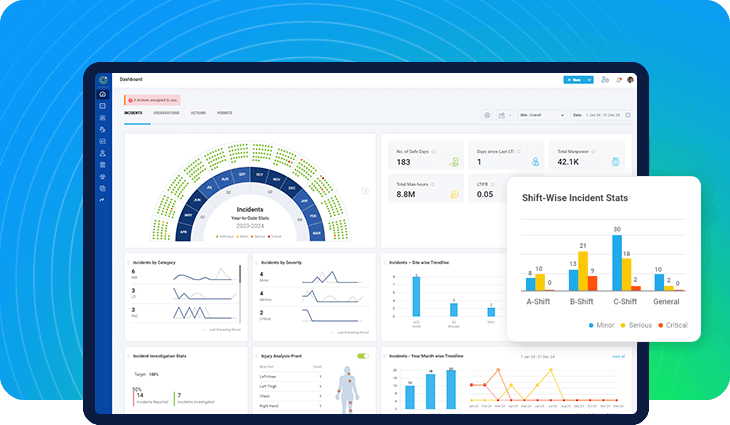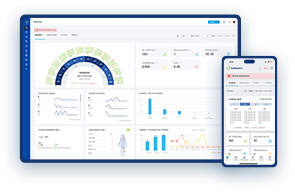
Critical Incident Reporting in Data Centers: Best Practices for Quick Response
Data centers are the unsung heroes behind our connected world, humming with precision and purpose. But within these high-tech environments, even a small incident can have big repercussions. Quick, effective incident reporting is essential to prevent minor issues from snowballing into major disruptions.
Here, we’ll explore best practices to ensure incidents are reported efficiently, keeping operations smooth and safe.
Why Incident Reporting Matters in Data Centers
Data centers are packed with high-value assets: from sensitive information to sophisticated equipment that demands constant care. When an incident occurs—be it a fire hazard, equipment failure, or minor injury—fast reporting can make a world of difference. Swift action not only prevents escalation but also reinforces a safety-first mindset across the team.
Key Elements of an Effective Incident Reporting System
A good incident reporting system should be:
Fast: Reporting should take seconds, not minutes.
User-Friendly: Anyone on the team should be able to report incidents without training.
Detailed Yet Simple: The system should capture essential information—what, where, when, and severity—without overwhelming users.
Accessible: Ideally, accessible on mobile devices to allow immediate reporting from anywhere within the facility.
These elements ensure that the reporting process becomes second nature, encouraging team members to report without hesitation.
Steps to Implementing Incident Reporting in Your Data Center
Here’s a step-by-step approach to rolling out an incident management process that fits data centers:
1. Define What Counts as an Incident: Specify what types of incidents need to be reported. This might include fire risks, chemical spills, electrical issues, equipment malfunctions, and personal injuries. Make it clear and easy to understand.

2. Create a Simple Reporting Form: Keep it concise. Key fields might include:
- Type of Incident: Fire, electrical, injury, etc.
- Location: Exact place in the facility.
- Time and Date: When it happened.
- Severity Level: Low, medium, high.
- Description: Short notes on what happened.
3. Train Your Team: Provide quick, practical training sessions to ensure everyone knows how to report incidents. Show them examples of both good and bad reports so they understand what information is needed.
4. Encourage Mobile Reporting: Equip your team with mobile access to the reporting system. This way, they can report incidents on the go, even if they’re deep within the data center.
5. Establish Follow-Up Protocols: Once an incident is reported, a follow-up system ensures accountability. Designate specific roles or teams to respond, investigate, and resolve issues.
Boosting Accountability Through Incident Reporting
In a data center, accountability is everything. An effective incident reporting system tracks every report and action taken. By documenting each incident from start to finish, management can see trends, understand root causes, and make adjustments to prevent similar issues in the future.
Moreover, when the team knows that reports are taken seriously, they’re more likely to report incidents promptly. Accountability creates a loop of trust and reinforces that safety is a top priority.
Quick Tips for Incident Reporting Success
Encourage Immediate Reporting: Make it clear that no incident is too small. Fast reporting prevents small issues from becoming big problems.

Regularly Review and Adjust: Periodically review the reporting process. Is it still easy? Are there any bottlenecks? Address them.
Celebrate Proactive Reporting: Recognize employees who report incidents promptly. This positive reinforcement encourages others to do the same.
Use Visual Cues: Place signs around high-risk areas reminding team members to report incidents. Visual reminders keep safety top-of-mind.
The Role of Software in Streamlining Data Center Safety
Using specialized software like Safetymint makes incident reporting faster and more accurate. Safety management tools offer:
Automated Alerts: Instantly notify the right teams about an incident.
Data Collection and Analysis: Store incident data for easy retrieval and analysis, helping you spot trends over time.
Compliance Support: Maintain records for audits and regulatory compliance, a crucial requirement in data centers.
Safetymint: Supporting Safety Management in Data Centers

Safetymint provides data centers with a comprehensive, flexible safety management solution tailored to the demands of high-stakes environments. Available on both web and mobile platforms, Safetymint ensures that incident reporting is fast, accessible, and easy to manage from anywhere within the facility. Whether you prefer a cloud-based or on-premise deployment, Safetymint adapts to fit your infrastructure needs, giving you complete control over your safety processes.
Beyond incident reporting, Safetymint offers other essential modules to enhance safety and compliance in data centers, including Permit to Work Management and Safety Inspection Management. These tools empower your team to stay proactive, compliant, and ready for any situation.
Ready to experience how Safetymint can elevate your data center’s safety? Request a demo or take a free trial for 14 days to see the impact firsthand.
Ben Johnson is a dedicated Customer Success Executive at Safetymint. With a strong commitment to excellence, Ben works closely with customers to ensure they fully leverage the capabilities of Safetymint to its fullest potential, aiming to significantly reduce or mitigate safety risks and incidents.




